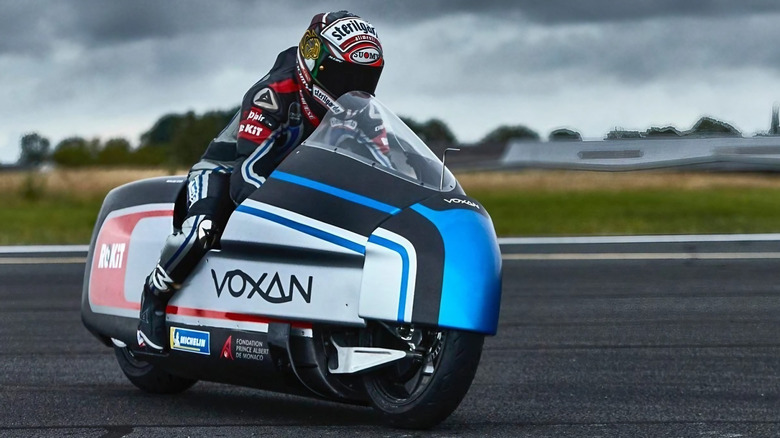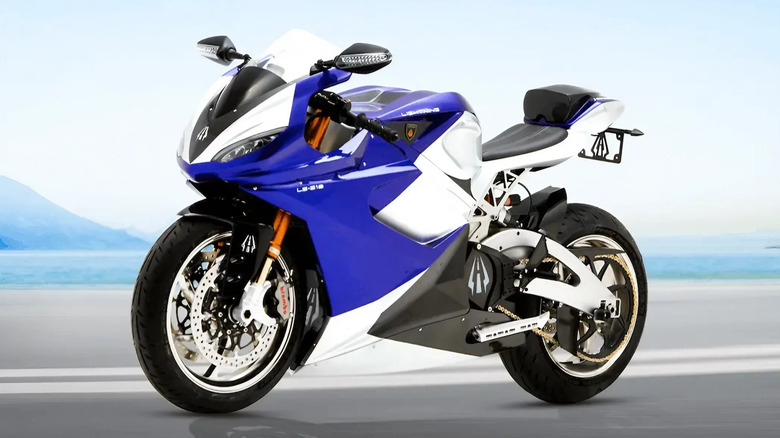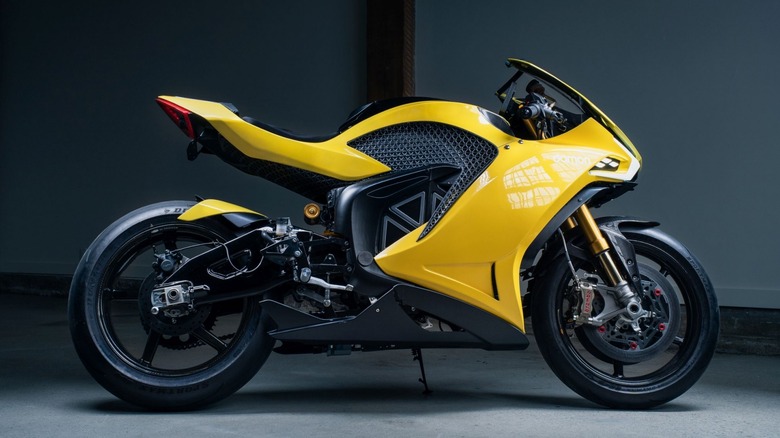Can Electric Motorcycles Go As Fast As Gas-Powered Ones?
Electric motorcycles have now matured into high-performance machines that are capable of going head-to-head with their gas-powered counterparts. While they haven't yet broken all the land-speed records, they're closing in fast — quite literally. Just look at the Voxan Wattman, which hit an astonishing 283 mph back in 2021, and set over 20 world speed records. It's not a production bike, but it's proof that electric speed is very real and only getting faster. At the same time, production models like the Lightning LS-218 have matched or even exceeded many gas-powered bikes in acceleration.
It's worth remembering that electric bikes didn't start off this way. For years, their focus was on sustainability and urban mobility, with whisper-quiet motors and zero emissions. However, as EV tech matured due to increased adoption and racing classes like MotoE grew in prestige, manufacturers started pushing limits. How far have they gotten? Let's take a look.
Comparing electric vs. gas motorcycles
We've got some serious contenders on the electric side of fastest motorcycles. The Lightning LS-218 leads the charge with a blistering 218 mph top speed, and a 0-60 mph time of under two seconds. That's quicker than pretty much any gas-powered production bike, including the legendary Suzuki Hayabusa, which manages the same sprint in 2.35 seconds. And it's not like the bike is designed solely for drag races: it's a mass-produced unit with a battery range that maxes out at 335 miles with the 28 kWh battery pack option.
Then there's Damon's HyperSport Premier, which isn't far behind. It hits 200 mph, comes with a futuristic "HyperDrive" powertrain, and still delivers a 200-mile range. You can also pick up Energica's Ego+ RS, which is a more seasoned contender with a top speed of 150 mph, and a 0–60 mph time of 2.6 seconds. It offers serious urban and highway potential with a claimed city range of 261 miles.
Some of the fastest gas-powered bikes still have teeth, though. The Kawasaki Ninja H2R is technically the fastest production motorcycle ever, topping out at a jaw-dropping 249 mph, though it's a track-only machine. Meanwhile, the 2025 Hayabusa — with its electronically-limited 186 mph top speed — still earns massive street cred with a 1,340cc engine producing 190 brake horsepower. If we go beyond production bikes, the fastest motorcycle ever is the Ack Attack streamliner — clocking in at 376 mph, powered by two turbocharged Hayabusa engines.
So which one should speed demons go for?
If it's acceleration you're after, electric bikes are already the kings. The difference is in the milliseconds, but that's all you need to maintain a comfortable lead over your opponent on the drag strip. The Lightning LS-218 and Damon HyperSport both show how electric powertrains deliver relentless, quiet, and eco-friendly speed. Plus, there's the added bonus of lower maintenance — no oil changes, fewer moving parts, and no fuel system headaches.
That said, the top speed records still belong to gas-powered bikes. Models like the Ninja H2R remain untouchable at the extreme end, especially in track-only scenarios. Gas engines also offer longer range and quicker refueling, giving them the edge in endurance racing and long-distance touring. Not to mention the cost: Most high-end electric motorcycles sit well above $30,000. That price gap is one of the biggest reasons some riders still hesitate to go electric, even when the performance is there. Meanwhile, excellent gas bikes like the Kawasaki Ninja 650 go for a fraction of that.
That said, electric motorcycles can end up saving you more in the long run. They command lower maintenance, fetch you EV grants and incentives, and of course, don't require gas to run.


